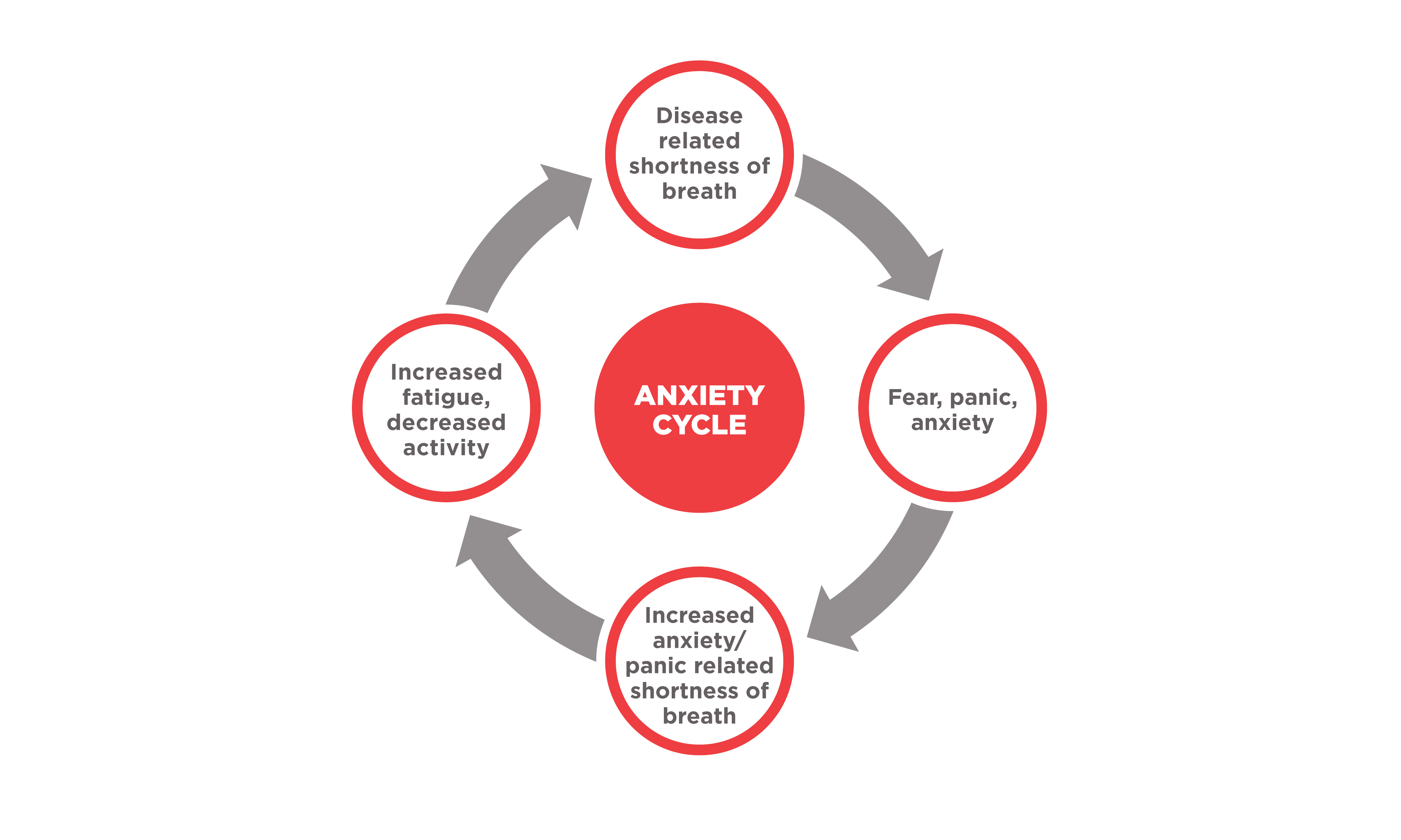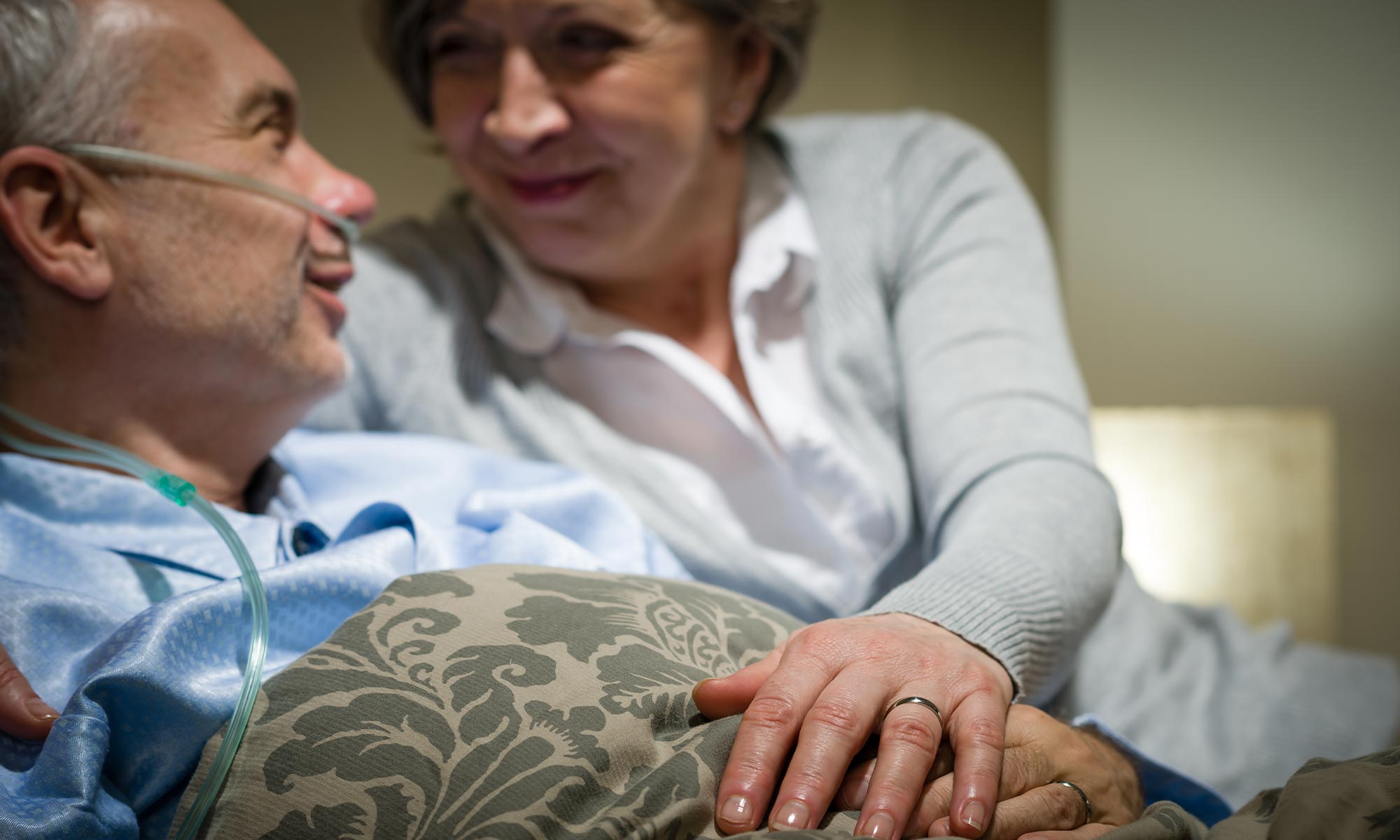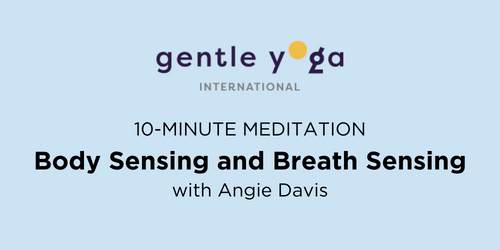Module 5
Managing Your Mood and Wellbeing

OVERVIEW
Every day may not be good when you live with chronic lung disease, but there is something good in every day.
By the end of this module, you will:
Goal 1: Learn about the moods associated with chronic lung disease
Goal 2: Learn about coping strategies to manage negative emotions
Goal 3: Exercise with us three times, increase your strength training and continue the home walking program
Goal 4: Take Action to analyze your moods and plan for positive solutions
How to create your best morning routine
1. Reflect on the day ahead
2. Smile at yourself in the mirror
3. Think of something that makes you happy
4. Make a healthy breakfast
5. Think of 3 things that you CAN do, and make sure you DO them
Understanding negative emotions and managing your moods
Living with chronic lung disease can affect many aspects of your life. Physical symptoms of shortness of breath, fatigue and cough can affect your confidence in your ability to perform activities or be as social as you would enjoy.
These physical symptoms can lead you to feel fearful, angry, frustrated and hopeless. Stress, anxiety and depression are normal reactions to living with chronic lung disease. These often feed into a sense of hopelessness and isolation. Quitting smoking can sometimes heighten these emotions.
To prevent emotions and moods from controlling your day, recognize that these feelings are real, as well as temporary.
- Acknowledge your feelings and work through them by reminding yourself that you are not alone in your thoughts and feelings.
- Acknowledge your abilities as well as the efforts that you make to improve your health and wellness.
- Value your relationships and talk with a friend or family member about your negative moods and emotions before setting them aside.
If you are unable to set them aside and are chronically concerned with negative thoughts and emotions talk to a member of your healthcare for direction and support.
Stress
STRESS is a normal part of human life. Whether you believe it is bad or good, you are right. People who believe that stress is good tend to cope better with life’s challenges. The stress response prepares your mind and body for handling difficult situations.
Chronic stress can lead to anxiety and/or depression. It uses up energy, and is associated with shortness of breath, muscle tension, and mood regulation. Stress can cause headaches, indigestion, painful muscles, and difficulty sleeping.
Managing your mood
- Decrease stress on a daily or weekly basis: Pace yourself – do not overload or overwhelm your day
- Ask for help or delegate a few tasks that have become a burden on your health and wellness. Ask your provider about Community Support Services – regional programs are often subsidized.
- Find your province or territory among the Ministries of health web sites for additional support.
Government of Canada Mental Health Support
- Respond assertively to demands:
– Don’t be afraid to say “no” or “not today”
– Offer a comfortable alternative based on your physical and emotional wellness - Relax your body and quiet your mind: Explore what works for you
– Diaphragmatic breathing
– Going outside for sun and fresh air
– Finding an online meditation
– Hand or shoulder massage

Anxiety
ANXIETY is a feeling of worry, nervousness or unease.
Chronic lung disease causes shortness of breath. This can bring on anxiety and panic about feeling air hungry. Panic and anxiety increase shortness of breath, leaving you stressed, tired and fearful of performing activities. Reduced activity leads to muscle deconditioning which makes you feel more short of breath and more anxious about being active; and the cycle continues.

Anxiety regarding shortness of breath can limit your social activities which leaves you feeling isolated, angry and/or sad.
Managing your mood
-
Sit back, relax, breathe, and think about the situations that don’t cause anxiety.
-
Pursed-lip breathing
-
Singing or humming a tune can help relieve shortness of breath and anxiety
-
-
Talk about it with a friend or family member, or journal it – don’t hold on to your negative feelings
-
If your anxiety is based on past experiences, how can you plan to be better prepared in the future?
-
Rather than dwelling on the past, consider options and possibilities to improve the situation
-
Recognize negative circular thinking and say STOP
-
-
Use positive self-talk – “can do” statements
-
I can pace myself
-
I can use breathing to calm my anxiety
-
I can enjoy doing these things
-
-
Use positive self-imagery: Imagining activates the same parts of your brain as actually doing!
-
Imagine yourself DOING
-
Imagine confidence
-
Imagine
-
Ask for help. If anxiety and fear are controlling your ability to participate in life, talk with your healthcare team for direction and support.
Depression
DEPRESSION is a low mood that lasts weeks and months coupled with feelings of sadness and hopelessness.

Chronic lung disease is difficult to cope with. Every flare-up leads to a little loss of lung function. Many feel a sense of loss for the future they had intended, or a loss for the activities that used to be enjoyed. Depression can range from mild to debilitating and can make it difficult to eat, sleep, exercise, and keep socially connected. Depression can also cause physical pain.
Managing your mood
Be aware of your moods
- Keep a diary of your mood on your calendar with a smiley face or sad face, or a scale from 1-10 on how your rate your joy or sadness
- Notice the things that help your mood
- Challenge the way you think
Be kind to yourself
- It’s okay to have a bad day. Sometimes, just getting out of bed is a victory. Take care of yourself, so that you can have a better tomorrow
- Self-care places value and worth on you as an individual not on your disease.
Set your mind to do something you enjoy and do it
- Keep active with exercise – ask a friend to join you while you walk
- Keep socially connected (visit, phone call, social media)
Ask for help. If depression is controlling your ability to enjoy or participate in life, talk to your healthcare team about direction and support.
The power of sexuality
Sexuality is both intimacy and sexual activity. It promotes feelings of pleasure, excitement, relaxation and a shared connection.

It is important to take time for intimacy. Intimacy brings comfort, confidence, joy, and security by validating an emotional bond and physical closeness. Share your needs, feelings, and ideas with your partner, honestly and directly.
Sexual activity is an important part of a healthy relationship. There is no need to abstain from sex because of your chronic lung disease. Additional planning can make sexual experiences more pleasurable.
Sexual Activity Planning Tips
- Plan for intimacy and sexual activity when you are feeling well rested
- Consider times when your long-acting inhaler is at its peak
- Be creative in finding positions that place less pressure on your chest and that require less energy
- Similar to exercise, ask your healthcare provider or team member about using a quick-acting inhaler 15-20 minutes before sexual activity and increasing your oxygen flow during sexual activity
- Pace yourself to enjoy the moment with less shortness of breath or cough
Positive mindset
Having a positive mindset gives you authority over your disease and provides opportunity for self-management.
- You are in charge of increasing your exercise capacity
- You are in charge of managing your symptoms
- You are in charge of taking your medications on time
- You are in charge of your health habits
- You are in charge of selecting healthy foods
- You are in charge of scheduling your vaccinations
- You are in charge of planning your advanced directives
- You are still in charge of your future
EXERCISE
This is the week to increase your strength training.
Steps to Success
-
If you have a pulse oximeter, check your oxygen saturation and heart rate. If they are normal for you, plan to exercise with us.
-
Do you assess your symptoms daily?
-
Do you take your controller inhalers as prescribed, at the same time, daily?
-
Do you use your fast-acting reliever medications less often now that you are using breathing techniques to manage your dyspnea?
-
Do you exercise regularly?
-
Did you decide to quit smoking, this can affect your mood and energy level. Remember, you are not alone. Call a friend to celebrate your decision and to support you in your effort. Reach out to a member of your healthcare team for additional support and resources.
-
The foods you choose can help you moods – berries, yogurt, oats, or whole grains are great choices to start your day in a great way.
-
If you have answered “yes” to some of these questions, you have so much to be proud of!
Keeping the promises that you have made to yourself is one way to improve your emotional well-being. Review your SMART Goal for exercise from module 1.
Method for Exercise Progression
Add 2 repetitions during each strength exercise (ie: if you were doing 10 reps, do 12, if you were doing 12 reps, do 14). The max number of reps is 15.
If you were doing 15 repetitions, increase the amount of weight you are using. Add 0.5 – 1kg for strength exercises. Begin with 8 reps of the new weight.
Gradually increase how long you walk, cycle or swim. Below is a guide to help you increase your walking time.
Home Walking Program
Week 1
5 minutes, 5 times per day
Weeks 2 & 3
10 minutes, 3 times per day
Weeks 4 & 5
15 minutes, 2 times per day
Week 6
20 minutes, 1 time per day
Week 7
25 minutes, 1 time per day
Week 8
30 minutes, 1 time per day
Relaxation, Meditation and Better Breathing
Reinforcing relaxation and diaphragmatic breathing.

Youtube supports many free Mindful Meditation and Better Breathing videos to promote effective breathing techniques, as well as mood, motivation, relaxation, stability, clarity and sleep enhancement. The Canadian Lung Association does not endorse the use of any particular or specific website or channel for meditation and relaxation. Sites listed are suggestions only.
TAKE ACTION
Analyze Your Moods
Can you identify situations that make you feel emotions of fear, worry, anxiety or sadness?
Ask yourself about the situations that lead to negative and positive emotions:
1. What situations create positive thoughts?
2. Which negative emotion(s) do you feel?
3. How does your body react?
4. What can help you cope?
Positive Self-talk
Positive self-talk and boundary setting does not come naturally for everyone. Practicing these techniques improves your confidence, you mood, you physical and mental wellbeing as you put these skills into use.
Practice Positive/Helpful Self-talk
Positivity promotes decision making and productivity, it promotes the power to select what is in your best interest.
However, you have to believe what you say, or you risk falling into a toxic positivity. Sometimes we need to challenge a negative thought with a positive and realistic thought.
Example of negative thought: “I can’t walk 20 minutes!”
Challenge: “I can walk 10 minutes, and will work on getting to 20 minutes this month.”
Example of negative thought: “I’m never going to feel better.”
Challenge: “If I think back to when I started this program, I can walk farther than I used to. I can also clean my house with fewer breaks.”
List 5 positive thoughts and affirmations
Examples:
- I am good at doing ….,
- I can do ….,
- I like myself because ….,
- I can forgive my mistakes…
and so on.
Explore the Possibilities
This is a skill that helps you stay positive by reinforcing your abilities.
Lung disease creates some limitations in your activities, but it shouldn’t stop you from doing the things you enjoy. Pacing yourself will make you feel capable rather than overwhelmed which lead to anxiety, depression, and stress. Knowing your limits and helping others respect your boundaries will give you self-confidence and peace.
Example
You’ve been asked to babysit your grandchild all day, but it in the past it has taken you 2 days to recover from associated fatigue.
Respond assertively as you set your boundaries
I would like to help you out, and I CAN DO some babysitting, but it’s best for me and the little one if we keep it to… (Set your time boundry).
I might not be able to do… (all of this)
but I am confident that I CAN DO… (this much)
Review Your Action Plan
Review your COPD Action Plan, your Asthma Action Plan or your Pulmonary Fibrosis Plan.
Breathe Better with the Respiratory Care Program
Sun Life and Online Pharmacy, provided by Pillway*, have partnered to offer you and your dependents the Respiratory Care Program. You'll receive 1-on-1 support to help you get back to doing the things you love while breathing easier. The program is available for people living with asthma and chronic obstructive pulmonary disease (COPD), and at no cost.
Read more about the Respiratory Care Program and our collaboration with Sun Life.
Make life more convenient with Online Pharmacy
Lumino Health Pharmacy*, provided by Pillway**, is an online pharmacy that makes life more convenient by changing the way you get your medications. Offering fast and free delivery, pharmacist support and medication management.
Read more about Online Pharmacy and our collaboration with Sun Life.
*SHG Pharmacy Inc. and SHG West Pharmacy Inc., doing business as Pillway pharmacies, are partially owned by Simpill Health Group Inc. For your information, and as a point of disclosure, Sun Life Assurance Company of Canada has partial ownership in Simpill Health Group Inc.
Programs not available in Quebec
FEEDBACK
Tell us what you think
Modules
Introduction · Module 1 · Module 2 · Module 3 · Module 4
Module 5 · Module 6 · Module 7 · Module 8 · Conclusion

Speak to a certified respiratory educator
Call our Health Information Line at 1-866-717-2673 to speak to a certified respiratory educator. You can also email info@lung.ca.
BREATHE Better – Stay STRONG Virtual Program Medical Disclaimer
Before you begin the BREATHE Better – Stay STRONG program, please read and agree to the medical disclaimer.
Medical Advice Disclaimer, Disclaimer of Warranty and Limitation of Liability
Please read this document carefully. The Canadian Lung Association (CLA) strongly recommends that you consult your physician or other qualified healthcare provider before choosing to take part in BREATHE Better | Stay STRONG. You acknowledge that CLA offers no medical assessment, diagnosis, or treatment, and that CLA makes no determination as to whether or not you are physically fit to participate in this program. This program is intended for Canadians living with chronic lung disease, be it obstructive or restrictive in nature. This program is not supervised and therefore not intended for Canadians who are awaiting lung transplant, lung volume reduction surgery or those who have pulmonary hypertension. Certain pre-existing non-respiratory conditions may also exclude you from participating in the exercise portion of this program.
THERE ARE POTENTIAL RISKS INHERENT in your participation in BREATHE Better | Stay STRONG, including, without limitation, worsening of your existing symptoms, an increased load on the heart, episodes of light headedness, fainting, dizziness, pain, chest discomfort, shortness of breath and bone and muscular injury. If you experience faintness, dizziness, pain, or unmanageable shortness of breath at any time while participating in exercise program, you should stop immediately.
CLA and BREATHE Better-Stay STRONG cannot respond to medical emergencies. If you think you have a medical emergency, call 911 immediately.
CLA assumes no liability or responsibility for the use of any information provided by BREATHE Better | Stay STRONG, or for your reliance on this information in place of specific medical advice from a qualified healthcare provider. As is, the health information content provided in this program is current, reviewed and approved by qualified healthcare professionals. To the maximum extent permitted by applicable law, CLA disclaims all liability for any errors or other inaccuracies in the information provided. In no event shall CLA be liable for damages of any kind, including but not limited to direct, indirect, special, consequential, or other monetary damages in connection with your use of or reliance upon information provided by BREATHE Better-Stay STRONG.
By following this program, you acknowledge that you have read, understand and agree to abide by the above Medical Advice Disclaimer, and Disclaimer of Warranty and Limitation of Liability.
